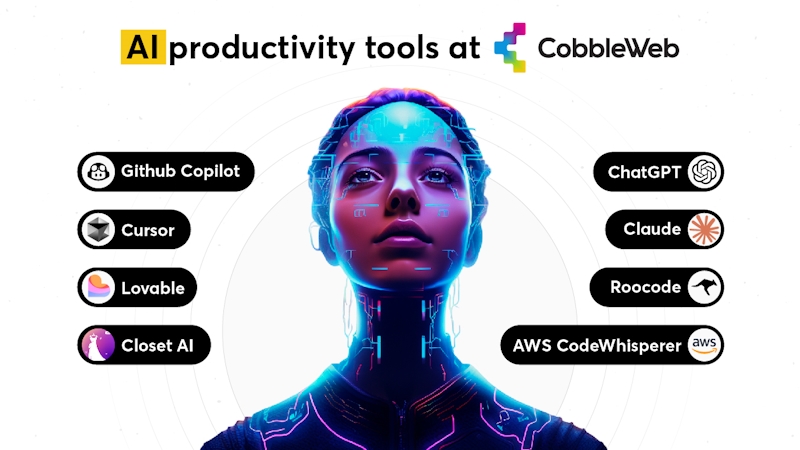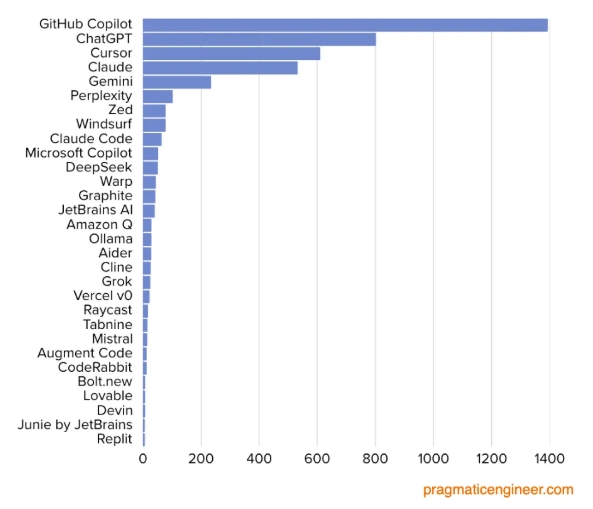How CobbleWeb uses AI and ML tools to build better products, faster

Are Humans Still Essential in Writing Code?
There’s a lingering question at every hackathon, code sprint, and watercooler debate in the tech world: with AI now capable of spitting out code faster than a Red Bull-fueled junior dev, do we still need human software engineers?
Spoiler alert: yes, very much so.
As AI tools become more powerful, companies are understandably curious – and cautious – about how they hire tech talent. A copy-paste culture powered by auto-generated code isn’t going to cut it when you’re building sophisticated, high-performance online marketplaces.
Take this wisdom from Shopify founder Tobias Lütke:
“Programming is not about typing, it’s about thinking.”
At CobbleWeb, we know that AI can write code, but it can’t write context. It doesn’t understand user expectations, business goals, or why the client suddenly needs to pivot to a subscription model . . . yesterday.
It’s Not About Who Can Code. It’s About Who Can Solve Problems.
There was a time when being proficient at applying the principles of Object-Oriented Programming and implementing higher-order functions made you a hotshot. That time has passed.
Today, software engineers are expected to be problem solvers, product thinkers, and collaboration pros. And AI tools have only sharpened that expectation.
Great engineers no longer just write clean code; they map user flows, decode vague client requirements, and architect flexible scalable systems.
As Marty Cagan, author of Inspired, points out:
“The best product teams don’t outsource their thinking.”
That’s why at CobbleWeb, we recruit engineers who are comfortable navigating ambiguity and excited about turning chaos into functional specs. AI is part of our toolkit, not our compass.
Beware the AI Buffet: Not Every Tool Is a Fit
The AI tool landscape is like an all-you-can-eat buffet. You’ve got Claude, Lovable, GitHub Copilot, Closet AI, and countless others. All shiny. All promising.
But try building a robust two-sided marketplace with them? You’ll often end up with the tech equivalent of a soggy plate of nachos.
AI tools excel at isolated tasks, like generating boilerplate code or some automated testing and debugging tasks. But they struggle with system design, business logic, and integrating domain-specific knowledge – all essential to online marketplace development.
There’s a growing cohort of startups that relied too heavily on AI to build out their MVPs. They shipped fast, but with tech debt that would make a CTO weep. Inevitably, they either folded or had to rebuild the platform properly.
Lesson learned: don’t entrust your platform architecture to a chatbot.
Requirements: The Achilles Heel of AI Tools
The biggest problem with AI development today? Requirements.
AI tools need detailed prompts to produce anything meaningful. And guess what? Most client requirements are messier than a toddler’s finger painting.
If you don’t understand the business context – the “why” behind a feature – you’ll never write a good enough prompt. Garbage in, garbage out.
At CobbleWeb, we expect engineers to act as translators between business needs and technical execution. That’s a skill no AI has mastered yet.
AI Is a Tool, Not a Replacement
Let’s set the record straight: AI won’t replace software engineers any time soon.
It will replace the parts of the job that are repetitive, frustrating, and frankly, boring.
Think of AI as your coding sous-chef. It preps the ingredients, cleans the chopping board, and sometimes even assembles the mise en place. But the actual cooking? That still takes a human touch.
As Reid Hoffman, LinkedIn co-founder and AI investor, said:
“AI won’t replace people, but people who use AI will replace people who don’t.”
AI Tools Speed Up Iteration
AI helps us move faster from idea to implementation.
By generating skeleton code or auto-documenting APIs, AI lets us prototype features faster. That means we can launch earlier, collect feedback, and iterate rapidly – a major win for product discovery.
For example, on a recent client project, we ran data validation scripts based on AI-generated synthetic data. This saved us weeks in the QA phase, allowing the client to test their user acquisition funnel months ahead of schedule.
Speed matters. But speed with purpose matters more.
AI Tools That Actually Help
We’re big fans of GitHub Copilot. It completes code snippets, suggests unit tests, and reduces cognitive load during development.
For debugging, tools like Snyk or Amazon CodeWhisperer help flag issues early.
And for documentation, we’ve found Claude helpful in summarising technical discussions into readable documentation – yes, even those two-hour Slack threads that feel like a philosophy seminar.
These tools help us ship cleaner code, faster, and with fewer sighs of frustration.
Most popular AI tools (survey of 3,000 software engineers)

AI for Clients: Beyond the Codebase
AI isn’t just for engineers.
We help our clients implement AI solutions in business-critical areas like:
- Customer support: Chatbots and intent recognition.
- Marketing automation: Email segmentation, predictive analytics, and content generation.
- Transaction reconciliation: Matching invoices, refunds, and payment flows.
One of our clients integrated Visii’s machine learning platform to enhance their product search. Instead of relying solely on tags and filters, users can now find art they love based on visual similarity and aesthetic preferences. Result? More engagement, higher conversion.

Other clients are testing AI for seller onboarding (e.g. verifying product authenticity) and synthetic data generation for better testing coverage.
The point? AI creates real value when it’s applied thoughtfully.
Want to Be a Super Engineer? Learn to Blend AI with Product Thinking
Knowing how to write code with AI is one thing. Knowing how to turn fuzzy ideas into functional specs, align them with business goals, and then build the right solution with AI’s help? That’s super-engineer territory.
At CobbleWeb, we invest in upskilling our team not just in new tools, but in timeless skills:
- Product discovery
- Functional specification writing
- Technical scoping
- Cross-functional collaboration
Those who master the mix become indispensable. They lead initiatives, mentor peers, and help clients build platforms that don’t just work, but win.
So if you’re a new software engineer wondering where to start: learn the tools, yes. But also learn the why behind the build. That’s what separates the script kiddies from the product maestros.
Is CobbleWeb the right fit for you?

CobbleWeb helps early-stage entrepreneurs, tech startups and growing companies to conceptualise, design, build, improve, and launch successful online marketplaces.

Find quick answers to the most commonly asked questions about our project flow, tech stack, approach to innovation, work culture, and more.

CobbleWeb has helped more than 30 startups and established companies design, build, test, and improve high-growth online marketplaces.